Photo

Abolishing the Janissary
Sultan Selim III initiated the reconstruction of the Ottoman army from scratch and addressed financial concerns. To fund the establishment of a modern army called the “Nizam-i Cedid,” the Janissary corps was disbanded, and a new system called “Irad-i Cedid” was introduced to finance these reforms.
Establishment of Irad-i Cedid
The decision was made to establish the Irad-i Cedid treasury, separate from the existing treasuries, to finance various military and state expenses. This treasury was funded through various sources, including taxes on tobacco, alcohol, and agricultural products, as well as special duties Istanbul Fun Tours.
Financial Regulations
To manage the revenues of the Irad-i Cedid treasury, a Directorate of Finance was established, and experienced officers were appointed to oversee its operations. Detailed regulations were outlined in a statute book to ensure proper management and accountability.
Sultan Selim’s Reforms
Sultan Selim III implemented extensive reforms in administration, economy, trade, politics, and diplomacy, inspired by European methods. He established permanent embassies in major European capitals and introduced a balanced foreign policy, facilitating Western influence in the Ottoman Empire.
Diplomatic Achievements
Permanent embassies in European capitals, including Paris and London, played a crucial role in enhancing Ottoman diplomacy. Notably, Ke|it Pasha served as an ambassador for an extended period, contributing to diplomatic advancements and the establishment of Western-standard diplomatic training.
Legacy of Ottoman Diplomacy
The Ottoman diplomatic efforts, bolstered by ambassadors like Ke|it Pasha and institutions such as the School of Diplomacy, paved the way for the rise of Ottoman statesmen. Ultimately, these diplomatic foundations laid the groundwork for the modern Republic of Turkey under the leadership of Mustafa Kemal Atatürk and his associates.
0 notes
Photo
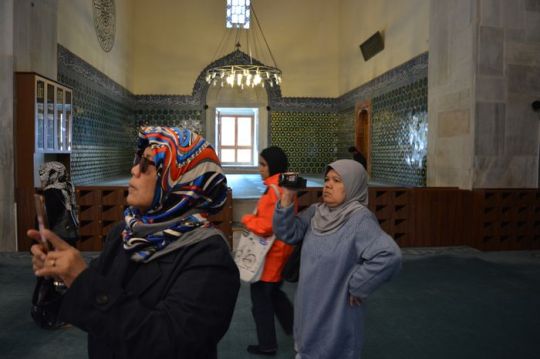
Investigation into Alleged Atrocities
False Claims of Atrocities
Kiani Pacha, tasked with investigating atrocities committed by the Baslii-Bazouks, made startling claims to Mr. Schuyler. However, upon investigation, it was discovered that some of these claims were entirely baseless. For instance, the alleged killing of the wife and daughter of the Mudir of Avrat-alan was found to be untrue, as the Mudir had no daughter, and his wife was unharmed. Similarly, reports of the murder of the Mudir’s wife in Otluk-kui were debunked, as there was no Mudir in the village during the unrest.
Disputing Accounts of Turkish Women’s Deaths
Of the twelve reported cases of Turkish women killed, only five were investigated, revealing that three were entirely unfounded. Without knowledge of the villages where the other seven incidents purportedly occurred, further investigation was impossible, leading to doubts about the accuracy of these claims. Additionally, the gruesome tale recounted by Edib Effendi about the mutilation of a Turkish girl was deemed pure fiction, lacking any evidence or credibility Bulgaria Tours.
Events in Panagurishti
In Panagurishti, also known as Otluk-kui, nine Turks and two Turkish women were reported killed over a period of nine to ten days. However, examination revealed that all but two women and one zaptieh were killed while armed, suggesting they were actively involved in confrontations. Around twenty prisoners were captured during this time, all of whom were treated well until the arrival of the Turkish army, which subsequently released them.
Corroboration of Accounts
The validity of these findings is supported by multiple accounts from different sources, including a schoolmistress in Panagurishti. Upon further investigation and comparison with various testimonies, the consistency of the accounts became evident. Furthermore, the Turks themselves, both locally and in Philippopolis, did not claim a higher death toll than what was reported.
The investigation into alleged atrocities revealed discrepancies and false claims regarding the deaths of Turkish women and other incidents. Through careful examination and corroboration of accounts, it was determined that many of these claims lacked credibility. This underscores the importance of thorough investigation and skepticism when assessing reports of violence and unrest.
0 notes
Photo

Investigation into Alleged Atrocities
False Claims of Atrocities
Kiani Pacha, tasked with investigating atrocities committed by the Baslii-Bazouks, made startling claims to Mr. Schuyler. However, upon investigation, it was discovered that some of these claims were entirely baseless. For instance, the alleged killing of the wife and daughter of the Mudir of Avrat-alan was found to be untrue, as the Mudir had no daughter, and his wife was unharmed. Similarly, reports of the murder of the Mudir’s wife in Otluk-kui were debunked, as there was no Mudir in the village during the unrest.
Disputing Accounts of Turkish Women’s Deaths
Of the twelve reported cases of Turkish women killed, only five were investigated, revealing that three were entirely unfounded. Without knowledge of the villages where the other seven incidents purportedly occurred, further investigation was impossible, leading to doubts about the accuracy of these claims. Additionally, the gruesome tale recounted by Edib Effendi about the mutilation of a Turkish girl was deemed pure fiction, lacking any evidence or credibility Bulgaria Tours.
Events in Panagurishti
In Panagurishti, also known as Otluk-kui, nine Turks and two Turkish women were reported killed over a period of nine to ten days. However, examination revealed that all but two women and one zaptieh were killed while armed, suggesting they were actively involved in confrontations. Around twenty prisoners were captured during this time, all of whom were treated well until the arrival of the Turkish army, which subsequently released them.
Corroboration of Accounts
The validity of these findings is supported by multiple accounts from different sources, including a schoolmistress in Panagurishti. Upon further investigation and comparison with various testimonies, the consistency of the accounts became evident. Furthermore, the Turks themselves, both locally and in Philippopolis, did not claim a higher death toll than what was reported.
The investigation into alleged atrocities revealed discrepancies and false claims regarding the deaths of Turkish women and other incidents. Through careful examination and corroboration of accounts, it was determined that many of these claims lacked credibility. This underscores the importance of thorough investigation and skepticism when assessing reports of violence and unrest.
0 notes
Photo
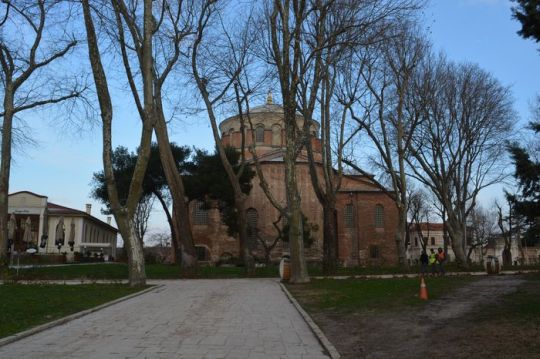
Unsubstantiated Claims and Reckless Accusations
Lack of Evidence
The assertion that atrocities were committed by both Bulgarians and Turks lacks credible evidence. Reports from various consuls in the region, including Turkish authorities themselves, fail to substantiate claims of widespread Bulgarian brutality. Turkish officials concede that the majority of Turkish casualties occurred in battle, with minimal evidence of civilian casualties. Even purported instances of Turkish women and children killed or harmed lack verification upon investigation. For instance, Kiani Pacha’s claim regarding the death of the Mudir’s wife and daughter was debunked by Mr. Schuyler’s inquiries, revealing the absence of evidence to support such allegations. Lord Derby’s sweeping assertion of Bulgarian barbarity appears baseless and irresponsible, particularly amid accusations leveled at reputable newspapers for allegedly spreading unfounded rumors Guided Turkey Tours .
Justification for Uprising
Critics argue that Bulgarians had no justification for their uprising and must bear the consequences. However, the manifesto released by the new government following the deposition of the previous Sultan offers a compelling rebuttal. It outlines the systemic misrule and oppression that pushed the Bulgarians to their breaking point. The rampant extortion and mismanagement of the government had plunged the peasantry into unimaginable misery, rendering their existence unsustainable without change. The revolution in Constantinople was a testament to the widespread discontent fueled by years of tyranny. Yet, instead of acknowledging these grievances, Midhat Pacha and his cohorts persist in persecuting the very people who acted out of necessity. The Bulgarians’ plight epitomizes a long-standing struggle against oppression and exploitation, a fight that any people, faced with similar circumstances, would be compelled to undertake.
Solidarity with the Weak
Rather than condemning the Bulgarians, we should empathize with their plight and recognize their just cause. No populace should endure the relentless exactions, extortion, and tyranny inflicted upon the Bulgarians for centuries. If such injustices were imposed elsewhere, the response would undoubtedly be one of unified resistance. It is imperative that we stand in solidarity with the oppressed, rejecting attempts to vilify them for seeking freedom and justice. In a world where the powerful often exploit the weak, it is our moral obligation to champion the cause of those who are unjustly oppressed.
0 notes
Photo

Unsubstantiated Claims and Reckless Accusations
Lack of Evidence
The assertion that atrocities were committed by both Bulgarians and Turks lacks credible evidence. Reports from various consuls in the region, including Turkish authorities themselves, fail to substantiate claims of widespread Bulgarian brutality. Turkish officials concede that the majority of Turkish casualties occurred in battle, with minimal evidence of civilian casualties. Even purported instances of Turkish women and children killed or harmed lack verification upon investigation. For instance, Kiani Pacha’s claim regarding the death of the Mudir’s wife and daughter was debunked by Mr. Schuyler’s inquiries, revealing the absence of evidence to support such allegations. Lord Derby’s sweeping assertion of Bulgarian barbarity appears baseless and irresponsible, particularly amid accusations leveled at reputable newspapers for allegedly spreading unfounded rumors Guided Turkey Tours .
Justification for Uprising
Critics argue that Bulgarians had no justification for their uprising and must bear the consequences. However, the manifesto released by the new government following the deposition of the previous Sultan offers a compelling rebuttal. It outlines the systemic misrule and oppression that pushed the Bulgarians to their breaking point. The rampant extortion and mismanagement of the government had plunged the peasantry into unimaginable misery, rendering their existence unsustainable without change. The revolution in Constantinople was a testament to the widespread discontent fueled by years of tyranny. Yet, instead of acknowledging these grievances, Midhat Pacha and his cohorts persist in persecuting the very people who acted out of necessity. The Bulgarians’ plight epitomizes a long-standing struggle against oppression and exploitation, a fight that any people, faced with similar circumstances, would be compelled to undertake.
Solidarity with the Weak
Rather than condemning the Bulgarians, we should empathize with their plight and recognize their just cause. No populace should endure the relentless exactions, extortion, and tyranny inflicted upon the Bulgarians for centuries. If such injustices were imposed elsewhere, the response would undoubtedly be one of unified resistance. It is imperative that we stand in solidarity with the oppressed, rejecting attempts to vilify them for seeking freedom and justice. In a world where the powerful often exploit the weak, it is our moral obligation to champion the cause of those who are unjustly oppressed.
0 notes
Photo

Collectivization and Economic Policies
Collectivization and Economic Policies (1950-1958)
Collectivization of Land (1950-1952)
In 1950, Bulgaria adopted the “Model Statute of the Collective Farms” (TKZS), modeled closely on the Soviet kolkhoz statute. The collectivization of land under the First Five Year Plan progressed significantly:
Year Collective Farms Farmers (%) Arable Land (%)
1944 28 — —
1946 480 3.7% 3.5%
1948 1,110 11.2% 6%
1952 2,747 52.3% 60.5%
The forced collectivization peaked in 1950, witnessing a significant increase in the number of collective farms. By the end of the First Five Year Plan, 60% of arable land and 50% of all farms were transformed into cooperatives Guided Istanbul Tour.
Economic and Labor Policies (1950-1957)
In 1950, a new system of compulsory state supplies was introduced, obliging farmers to provide a fixed quantity of grain to the state, irrespective of the yield. The year 1951 saw the implementation of a new Labor Code, issuing job passports and prohibiting job changes. The Second Five Year Plan (1953-1957) continued the focus on industrial expansion, particularly in heavy industry, and intensified land collectivization.
Capital Investments and Industrial Preferences (1953-1957)
A comparison of capital investments between the First and Second Five Year Plans reveals a clear preference for industrial development:
Sector 1st Five Year Plan (Billion Leva) 2nd Five Year Plan (Billion Leva)
Industry 5.9 13.0
Agriculture 1.2 3.2
Transport and Communications 2.1 3.1
Others 2.8 4.7
Total 12.0 24.0
The preferred category of industry can be further divided into heavy and light industry
Year Heavy Industry (%) Light Industry (%)
1939 29% 71%
1948 35% 65%
1952 39.1% 60.9%
1955 45.2% 54.8%
Acceleration of Collectivization (1953-1958)
The tempo of collectivization in agriculture accelerated towards the end of the Second Five Year Plan. It set the stage for the “great leap forward” at the beginning of the Third Plan:
Year Collective Farms (TKZS) Farmers Average Acreage per Farm
1953 2,744 207 2,127 acres
1958 3,290 374 2,850 acres
In 1957, the Labor Code underwent revision. By April 10, 1958, the Socialist sector dominated Bulgaria’s national economy, constituting:
98% of entire industrial production
87% of entire rural-economic production
99% of domestic trade
93% of national income.
0 notes
Photo

Collectivization and Economic Policies
Collectivization and Economic Policies (1950-1958)
Collectivization of Land (1950-1952)
In 1950, Bulgaria adopted the “Model Statute of the Collective Farms” (TKZS), modeled closely on the Soviet kolkhoz statute. The collectivization of land under the First Five Year Plan progressed significantly:
Year Collective Farms Farmers (%) Arable Land (%)
1944 28 — —
1946 480 3.7% 3.5%
1948 1,110 11.2% 6%
1952 2,747 52.3% 60.5%
The forced collectivization peaked in 1950, witnessing a significant increase in the number of collective farms. By the end of the First Five Year Plan, 60% of arable land and 50% of all farms were transformed into cooperatives Guided Istanbul Tour.
Economic and Labor Policies (1950-1957)
In 1950, a new system of compulsory state supplies was introduced, obliging farmers to provide a fixed quantity of grain to the state, irrespective of the yield. The year 1951 saw the implementation of a new Labor Code, issuing job passports and prohibiting job changes. The Second Five Year Plan (1953-1957) continued the focus on industrial expansion, particularly in heavy industry, and intensified land collectivization.
Capital Investments and Industrial Preferences (1953-1957)
A comparison of capital investments between the First and Second Five Year Plans reveals a clear preference for industrial development:
Sector 1st Five Year Plan (Billion Leva) 2nd Five Year Plan (Billion Leva)
Industry 5.9 13.0
Agriculture 1.2 3.2
Transport and Communications 2.1 3.1
Others 2.8 4.7
Total 12.0 24.0
The preferred category of industry can be further divided into heavy and light industry
Year Heavy Industry (%) Light Industry (%)
1939 29% 71%
1948 35% 65%
1952 39.1% 60.9%
1955 45.2% 54.8%
Acceleration of Collectivization (1953-1958)
The tempo of collectivization in agriculture accelerated towards the end of the Second Five Year Plan. It set the stage for the “great leap forward” at the beginning of the Third Plan:
Year Collective Farms (TKZS) Farmers Average Acreage per Farm
1953 2,744 207 2,127 acres
1958 3,290 374 2,850 acres
In 1957, the Labor Code underwent revision. By April 10, 1958, the Socialist sector dominated Bulgaria’s national economy, constituting:
98% of entire industrial production
87% of entire rural-economic production
99% of domestic trade
93% of national income.
0 notes
Photo
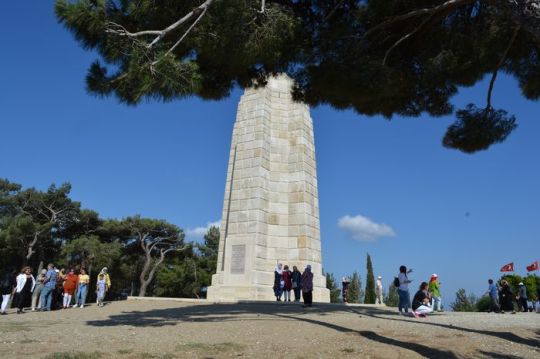
Rain or Shine Climbing for the Love of Nature
A March Journey to Barla
March brought cold winds and rain as GOLDOSK embarked on a mountain path leading to Barla. The clouds sprinkled raindrops, adding to the challenge of the climb. Taking a break by a mountain brook, the group shared snacks and rested, ready to continue the journey.
Becoming Part of Nature
As they reached the small lake in Barla, the rain intensified into a storm, and the group embraced the elements, becoming like steppe grass, completely soaked. Stretching out like savanna flora, they turned their internal deserts longing for water into green landscapes. The hills seemed to bid farewells, asking not to be left alone.
Barla’s Warm Welcome
As the group approached Barla, walking through valleys and tea plantations, locals looked on with amusement. Some envied their adventurous spirit, while others found it odd to pass over mountains in such weather. The wet and grandeur of Barla appeared on the slopes of the hills, marking the end of the journey.
Echoes of Tiredness
Boarding waiting buses, the group listened to the echoes of their tiredness, reminiscing about the challenges and beauty of the climb. Despite the rain and obstacles, the journey left a sense of accomplishment and a connection to nature Guided Tours Turkey.
Savoring the Mangal Tradition: More Than Just Barbecuing
Beyond Meat The Global Love for Mangal
While Turks have a deep-rooted love for meat, the tradition of mangal (barbecue) is shared by many nations worldwide. Different cultures enjoy this cooking style in various ways, creating a rich and appetizing taste tradition.
Mangal A Social Tradition
Despite being perceived as a masculine activity, mangal is more than just cooking meat. It is a social gathering where loved ones and friends come together. The setup, historically used for cooking coffee during the Ottoman Empire, evolved to include meat, becoming a cherished part of Turkish culture.
The Irresistible Mangal Feast
Mangal setups are typically made of metal plates such as steel, iron, copper, or brass, available in square and round types. The feast includes delicious meats alongside fresh peppers, tomatoes, and eggplants, creating a royal culinary experience. The history of mangal in Turkey dates back to the 1400s, and it became an indispensable part of picnic ceremonies during the urbanization wave in the 1960s.
A Tradition that Transcends Time
Mangal is a tradition that transcends time, offering not only a flavorful meal but also a social and cultural experience. It continues to be a popular activity, bringing people together to enjoy the simple pleasures of good food and camaraderie.
0 notes
Photo

Rain or Shine Climbing for the Love of Nature
A March Journey to Barla
March brought cold winds and rain as GOLDOSK embarked on a mountain path leading to Barla. The clouds sprinkled raindrops, adding to the challenge of the climb. Taking a break by a mountain brook, the group shared snacks and rested, ready to continue the journey.
Becoming Part of Nature
As they reached the small lake in Barla, the rain intensified into a storm, and the group embraced the elements, becoming like steppe grass, completely soaked. Stretching out like savanna flora, they turned their internal deserts longing for water into green landscapes. The hills seemed to bid farewells, asking not to be left alone.
Barla’s Warm Welcome
As the group approached Barla, walking through valleys and tea plantations, locals looked on with amusement. Some envied their adventurous spirit, while others found it odd to pass over mountains in such weather. The wet and grandeur of Barla appeared on the slopes of the hills, marking the end of the journey.
Echoes of Tiredness
Boarding waiting buses, the group listened to the echoes of their tiredness, reminiscing about the challenges and beauty of the climb. Despite the rain and obstacles, the journey left a sense of accomplishment and a connection to nature Guided Tours Turkey.
Savoring the Mangal Tradition: More Than Just Barbecuing
Beyond Meat The Global Love for Mangal
While Turks have a deep-rooted love for meat, the tradition of mangal (barbecue) is shared by many nations worldwide. Different cultures enjoy this cooking style in various ways, creating a rich and appetizing taste tradition.
Mangal A Social Tradition
Despite being perceived as a masculine activity, mangal is more than just cooking meat. It is a social gathering where loved ones and friends come together. The setup, historically used for cooking coffee during the Ottoman Empire, evolved to include meat, becoming a cherished part of Turkish culture.
The Irresistible Mangal Feast
Mangal setups are typically made of metal plates such as steel, iron, copper, or brass, available in square and round types. The feast includes delicious meats alongside fresh peppers, tomatoes, and eggplants, creating a royal culinary experience. The history of mangal in Turkey dates back to the 1400s, and it became an indispensable part of picnic ceremonies during the urbanization wave in the 1960s.
A Tradition that Transcends Time
Mangal is a tradition that transcends time, offering not only a flavorful meal but also a social and cultural experience. It continues to be a popular activity, bringing people together to enjoy the simple pleasures of good food and camaraderie.
0 notes
Photo
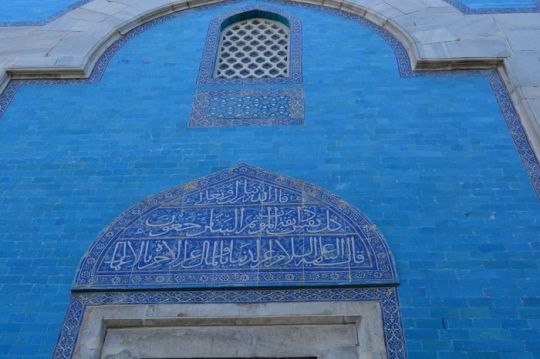
Klissura's Unfulfilled Hopes
The Lingering Shadows of Klissura’s Despair
This article delves into the aftermath of Klissura’s devastation, shedding light on the broken promises and insurmountable barriers that continue to plague the survivors. Despite assurances of restitution, the plight of Klissura epitomizes the bureaucratic hurdles and unfulfilled hopes that define the post-atrocity landscape.
The Elusive Return of Cattle and Retorts
In the wake of Klissura’s destruction, promises echoed through the air like a distant, fleeting melody. The Mutle-Serif of Philippopolis tantalized the victims with visions of assembled cattle awaiting identification, only to be revealed as an illusion. The pledged return of retorts and cattle remained an unfulfilled promise, leaving the survivors in Klissura grappling with shattered expectations Tour Bulgaria.
The Philippopolis Passport Paradox
The seemingly straightforward directive to reclaim lost cattle at Philippopolis unfolded into a Kafkaesque paradox. While the prospect appeared just and equitable, Mr. Schuyler unraveled the hidden layers of deception. Striking at the core of Turkish duplicity, he uncovered the issuance of strict orders preventing villagers from leaving without a special passport. The freedom to claim one’s cattle now danced behind bureaucratic barriers—a cruel twist in the quest for justice.
Imprisoned Amidst Ruins
In Klissura, where hope was already a scarce commodity, the people faced an additional blow. Stripped of their homes and livelihoods, they found themselves imprisoned amidst the ruins. The promise of identifying and reclaiming their cattle in Philippopolis turned into a cruel irony as the survivors were forbidden to leave the remnants of their village, perpetuating their state of despair.
A Glimpse into Systemic Deception
The restrictive passport measures exemplify the broader Turkish strategy in responding to demands for justice and reform. A veneer of compliance conceals a maze of bureaucratic obstructions, rendering promises hollow. Klissura’s ordeal serves as a poignant illustration of the systemic deception employed to feign adherence to international demands while perpetuating the suffering of the afflicted.
Klissura’s Cry for Genuine Restoration
Klissura’s cry echoes beyond its razed landscape—a plea for genuine restoration, devoid of empty promises and bureaucratic machinations. The international community must heed the lessons of Klissura, exposing the façade of compliance and demanding tangible actions to rebuild shattered lives. Only through unyielding pressure can Klissura’s survivors hope for a future unmarred by broken promises and bureaucratic barriers.
0 notes
Photo

Klissura's Unfulfilled Hopes
The Lingering Shadows of Klissura’s Despair
This article delves into the aftermath of Klissura’s devastation, shedding light on the broken promises and insurmountable barriers that continue to plague the survivors. Despite assurances of restitution, the plight of Klissura epitomizes the bureaucratic hurdles and unfulfilled hopes that define the post-atrocity landscape.
The Elusive Return of Cattle and Retorts
In the wake of Klissura’s destruction, promises echoed through the air like a distant, fleeting melody. The Mutle-Serif of Philippopolis tantalized the victims with visions of assembled cattle awaiting identification, only to be revealed as an illusion. The pledged return of retorts and cattle remained an unfulfilled promise, leaving the survivors in Klissura grappling with shattered expectations Tour Bulgaria.
The Philippopolis Passport Paradox
The seemingly straightforward directive to reclaim lost cattle at Philippopolis unfolded into a Kafkaesque paradox. While the prospect appeared just and equitable, Mr. Schuyler unraveled the hidden layers of deception. Striking at the core of Turkish duplicity, he uncovered the issuance of strict orders preventing villagers from leaving without a special passport. The freedom to claim one’s cattle now danced behind bureaucratic barriers—a cruel twist in the quest for justice.
Imprisoned Amidst Ruins
In Klissura, where hope was already a scarce commodity, the people faced an additional blow. Stripped of their homes and livelihoods, they found themselves imprisoned amidst the ruins. The promise of identifying and reclaiming their cattle in Philippopolis turned into a cruel irony as the survivors were forbidden to leave the remnants of their village, perpetuating their state of despair.
A Glimpse into Systemic Deception
The restrictive passport measures exemplify the broader Turkish strategy in responding to demands for justice and reform. A veneer of compliance conceals a maze of bureaucratic obstructions, rendering promises hollow. Klissura’s ordeal serves as a poignant illustration of the systemic deception employed to feign adherence to international demands while perpetuating the suffering of the afflicted.
Klissura’s Cry for Genuine Restoration
Klissura’s cry echoes beyond its razed landscape—a plea for genuine restoration, devoid of empty promises and bureaucratic machinations. The international community must heed the lessons of Klissura, exposing the façade of compliance and demanding tangible actions to rebuild shattered lives. Only through unyielding pressure can Klissura’s survivors hope for a future unmarred by broken promises and bureaucratic barriers.
0 notes
Photo
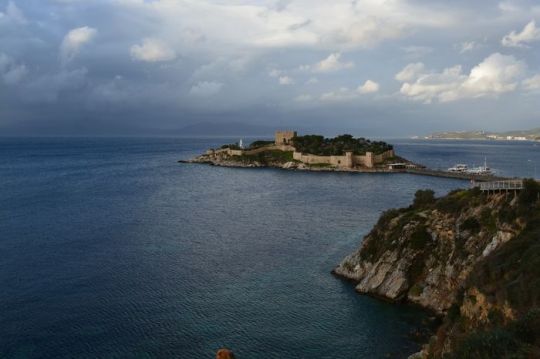
Unraveling the Threads of Rebellion
Avrat-Alan’s Fragile Resistance
Whispers of Dissent Avrat-Alan’s Reluctant Rebellion
In the annals of rebellion, Avrat-Alan emerges as a complex tableau where the echo of dissent met the stark reality of pragmatism. Unlike Otluk-kui, the resistance in Avrat-Alan lacked the fervor and unity that typifies a formidable uprising. Instead, it unfolded as a hesitant and fragmented endeavor, revealing a stark divide between the impulsive actions of the youth and the measured reservations of their elders.
The elder and more prudent segment of Avrat-Alan’s populace abstained from participating in the uprising, demonstrating a sagacious reluctance to engage in a futile endeavor. Their counsel fell on deaf ears as the impetuousness of the young men propelled them into a venture that their elders viewed with skepticism. This schism in generational perspectives delineates a community grappling with the cost-benefit analysis of rebellion—an internal struggle laid bare by the ensuing events Bulgaria Holidays.
The Unraveling Bubble Avrat-Alan’s Resistance in Retreat
As Hafiz Pacha’s forces approached Otluk-kui, a pivotal moment unfolded in Avrat-Alan—one that exposed the vulnerability of a rebellion built on shaky foundations. A substantial portion of the insurgents ventured out to reconnoiter, leaving the rest of the populace torn between fear of Turkish retribution and the hope of appeasement. In a surprising turn of events, the pragmatic majority, disenchanted with the ill-fated rebellion, rose against their youthful compatriots.
The insurgents who remained within Avrat-Alan found themselves confined, not by the might of Turkish forces but by the hands of their own disillusioned community. A desperate attempt to signal appeasement to Hafiz Pacha unfolded as the elders, recognizing the futility of resistance, sought to distance themselves from the impulsive actions of the rebels. The confinement of the insurgents within the konak, and the subsequent message to Hafiz Pacha, was a clear indication of the majority’s disapproval and their desire to disentangle themselves from a rebellion that held no promise.
The collapse of the rebellion, when confronted by the advancing Turkish troops, resembled the bursting of a fragile bubble. The uprising, built on the misjudgments of the youth and lacking the foundational support of the wider community, crumbled under the weight of its own impracticality. Avrat-Alan, in this moment, became a microcosm of the larger narrative—a cautionary tale of rebellion without collective conviction, where the fleeting aspirations of the young met the sobering reality dictated by the elders’ pragmatism.
0 notes
Photo
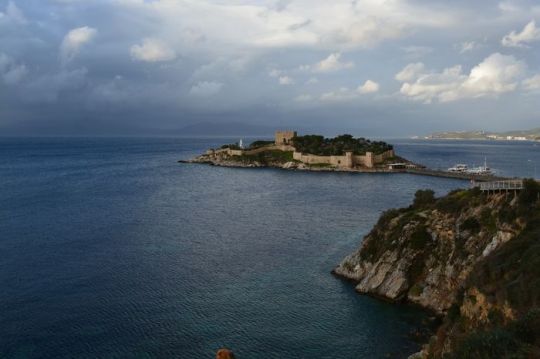
Unraveling the Threads of Rebellion
Avrat-Alan’s Fragile Resistance
Whispers of Dissent Avrat-Alan’s Reluctant Rebellion
In the annals of rebellion, Avrat-Alan emerges as a complex tableau where the echo of dissent met the stark reality of pragmatism. Unlike Otluk-kui, the resistance in Avrat-Alan lacked the fervor and unity that typifies a formidable uprising. Instead, it unfolded as a hesitant and fragmented endeavor, revealing a stark divide between the impulsive actions of the youth and the measured reservations of their elders.
The elder and more prudent segment of Avrat-Alan’s populace abstained from participating in the uprising, demonstrating a sagacious reluctance to engage in a futile endeavor. Their counsel fell on deaf ears as the impetuousness of the young men propelled them into a venture that their elders viewed with skepticism. This schism in generational perspectives delineates a community grappling with the cost-benefit analysis of rebellion—an internal struggle laid bare by the ensuing events Bulgaria Holidays.
The Unraveling Bubble Avrat-Alan’s Resistance in Retreat
As Hafiz Pacha’s forces approached Otluk-kui, a pivotal moment unfolded in Avrat-Alan—one that exposed the vulnerability of a rebellion built on shaky foundations. A substantial portion of the insurgents ventured out to reconnoiter, leaving the rest of the populace torn between fear of Turkish retribution and the hope of appeasement. In a surprising turn of events, the pragmatic majority, disenchanted with the ill-fated rebellion, rose against their youthful compatriots.
The insurgents who remained within Avrat-Alan found themselves confined, not by the might of Turkish forces but by the hands of their own disillusioned community. A desperate attempt to signal appeasement to Hafiz Pacha unfolded as the elders, recognizing the futility of resistance, sought to distance themselves from the impulsive actions of the rebels. The confinement of the insurgents within the konak, and the subsequent message to Hafiz Pacha, was a clear indication of the majority’s disapproval and their desire to disentangle themselves from a rebellion that held no promise.
The collapse of the rebellion, when confronted by the advancing Turkish troops, resembled the bursting of a fragile bubble. The uprising, built on the misjudgments of the youth and lacking the foundational support of the wider community, crumbled under the weight of its own impracticality. Avrat-Alan, in this moment, became a microcosm of the larger narrative—a cautionary tale of rebellion without collective conviction, where the fleeting aspirations of the young met the sobering reality dictated by the elders’ pragmatism.
0 notes
Photo

Achmet-Agha
The Turkish authorities do not even pretend that there was any Turk killed here, or that the inhabitants offered any resistance whatever. When Achmet-Agha, who commanded the massacre, came with the Bashi-Bazouks and demanded the surrender of their arms, they at first refused, but offered to deliver them to the regular troops or to the Kaimakam at Tatar Bazardjik. This, however, Achmet-Agha refused to allow, and insisted upon their arms being delivered to him and his Bashi-Bazouks.
Christians and Turks
After considerable hesitation and parleying this was done. It must not be supposed that these were arms that the inhabitants had especially prepared for an insurrection. They were simply the arms that everybody, Christians and Turks alike, carried and wore openly, as is the custom here. What followed the delivery of the arms will best be understood by the continuation of the recital of what we saw yesterday.
At the point where we descended into the principal street of the place, the people who had gathered around us pointed to a heap of ashes by the roadside, among which could be distinguished a great number of calcined bones. Here a heap of dead bodies had been burnt, and it would seem that the Turks had been making some futile and misdirected attempts at cremation.
A little further on we came to an object that filled us with pity and horror. It was the skeleton of a young girl not more than fifteen, lying by the roadside, and partly covered with the dobris of a fallen wall. It was still clothed in a chemise ; the ankles were enclosed in footless stockings; but the little feet, from which the shoes had been taken, were naked, and owing to the fact -that the flesh had dried instead of decomposing, were nearly perfect Guided Istanbul Tour.
There was a large gash in the skull, to which a mass of rich brown hair nearly a yard long still clung, trailing in the dust. It is to be remarked that all the skeletons of women found here were dressed in a chemise only, and this poor child had evidently been stripped to her chemise, partly in the search for money and jewels, partly out of mere brutality, then outraged, and afterwards killed.
0 notes
Photo
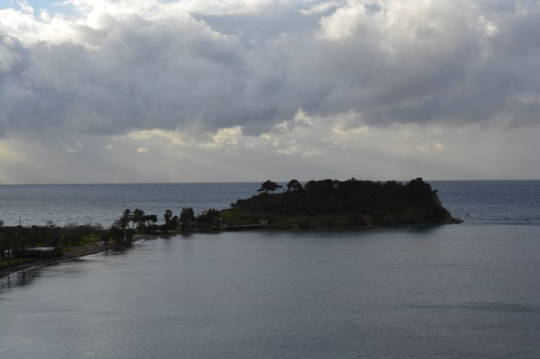
Male Christian population
Here is an example of Turkish ideas of reform. Until the last year the whole male Christian population, from infants one day old up to the age of a hundred, had to pay the military exemption tax. Last year, however, a great reform was ushered in with a loud flourish of trumpets. In future, only those capable of military service were to pay the exemption tax, and there were great rejoicings among the people.
But when the tax came to be levied, what was the astonishment of every body to find that each village was ordered to pay exactly the same sum as before. The tax was only redistributed. The round sum before paid on the whole population of the village now falls on the shoulders of those only capable of military duty. But the whole amount must be made up. This is the Turkish idea of reform, and the Turkish way of throwing dust in the eyes of Europe City Tours Istanbul.
And these are the people from whom we expect reforms! There will be no reforms. The thousands of helpless women and children, of babes and sucklings slaughtered in cold blood, whose bones and flesh are fattening the soil of Bulgaria, cry out against the hollow mockery, and give it the lie. And you say, oh statesmen of Europe, that the status quo must be maintained ; that this must last. I tell you it will not last. You must find another solution for the Eastern question, or another solution will find you. It will not last, or civilization is a delusion, justice a mockery, and Christianity a farce and a failure.
The following letter reached the Daily News office without date.
0 notes
Photo

Male Christian population
Here is an example of Turkish ideas of reform. Until the last year the whole male Christian population, from infants one day old up to the age of a hundred, had to pay the military exemption tax. Last year, however, a great reform was ushered in with a loud flourish of trumpets. In future, only those capable of military service were to pay the exemption tax, and there were great rejoicings among the people.
But when the tax came to be levied, what was the astonishment of every body to find that each village was ordered to pay exactly the same sum as before. The tax was only redistributed. The round sum before paid on the whole population of the village now falls on the shoulders of those only capable of military duty. But the whole amount must be made up. This is the Turkish idea of reform, and the Turkish way of throwing dust in the eyes of Europe City Tours Istanbul.
And these are the people from whom we expect reforms! There will be no reforms. The thousands of helpless women and children, of babes and sucklings slaughtered in cold blood, whose bones and flesh are fattening the soil of Bulgaria, cry out against the hollow mockery, and give it the lie. And you say, oh statesmen of Europe, that the status quo must be maintained ; that this must last. I tell you it will not last. You must find another solution for the Eastern question, or another solution will find you. It will not last, or civilization is a delusion, justice a mockery, and Christianity a farce and a failure.
The following letter reached the Daily News office without date.
0 notes
Photo
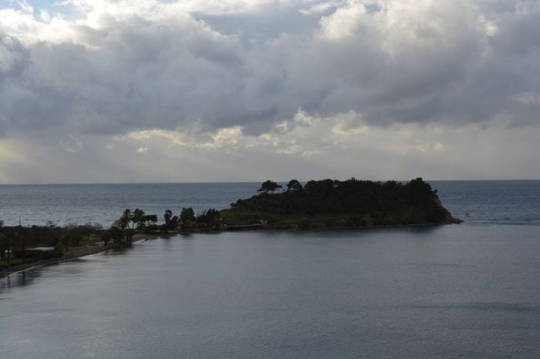
Male Christian population
Here is an example of Turkish ideas of reform. Until the last year the whole male Christian population, from infants one day old up to the age of a hundred, had to pay the military exemption tax. Last year, however, a great reform was ushered in with a loud flourish of trumpets. In future, only those capable of military service were to pay the exemption tax, and there were great rejoicings among the people.
But when the tax came to be levied, what was the astonishment of every body to find that each village was ordered to pay exactly the same sum as before. The tax was only redistributed. The round sum before paid on the whole population of the village now falls on the shoulders of those only capable of military duty. But the whole amount must be made up. This is the Turkish idea of reform, and the Turkish way of throwing dust in the eyes of Europe City Tours Istanbul.
And these are the people from whom we expect reforms! There will be no reforms. The thousands of helpless women and children, of babes and sucklings slaughtered in cold blood, whose bones and flesh are fattening the soil of Bulgaria, cry out against the hollow mockery, and give it the lie. And you say, oh statesmen of Europe, that the status quo must be maintained ; that this must last. I tell you it will not last. You must find another solution for the Eastern question, or another solution will find you. It will not last, or civilization is a delusion, justice a mockery, and Christianity a farce and a failure.
The following letter reached the Daily News office without date.
0 notes